I have used several Nikon D90 cameras at various times. In whatever conditions they were not: I constantly carried cameras with me in hikes, reinstalled lenses millions of times, in the rain, in the cold and on hot days - but the cameras worked like clockwork. Of course, I understand that good copies of Nikon D90 may have come across, but still, many years of trouble-free operation and mileage of over 130.000 (one hundred thirty thousand) of one copy and over 250.000 (a quarter of a million) of the second copy only gives rise to positive reviews.
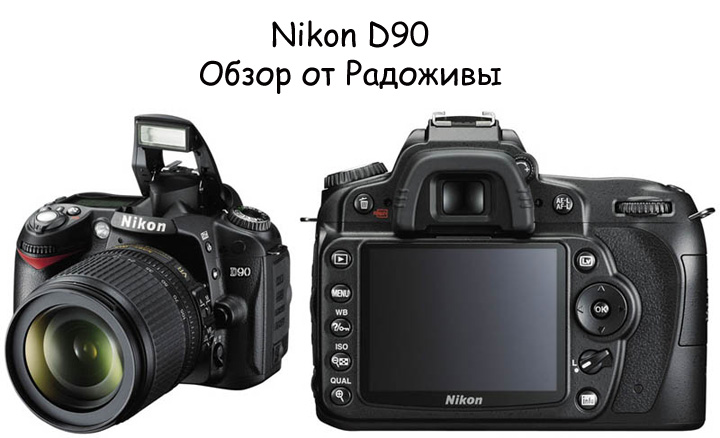
Review of the Nikon D90. View of the camera itself.
To fully understand and understand the camera, you just need read the instructionsIt’s long and boring, but I don’t see another way. The quality of the pictures very much depends on the lens and the methodology of your shooting, as well as image control mode, therefore, to say that the camera shoots better or worse is blasphemy, we can only talk about its ergonomics, technical characteristics and direct work experience. Always remember that important how to take pictures, but not by what means.
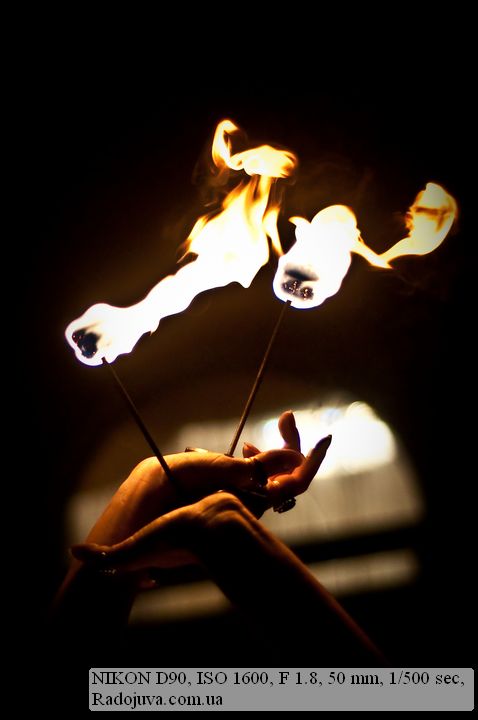
Sample photos on Nikon D90
And so, the camera belongs to the class of digital mirrors mid-range cameras... The Nikon D90 is often said to be an advanced amateur camera. Therefore, please note that this is not a professional camera, as they often write on the Internet (especially in online stores), professional cameras - is D300(s) D200, D700, D3(x, s), D4, D800(E) - therefore, you need to understand that the device is more aimed at amateurs than at professionals. The main feature of the camera is that the set of functions allows you to use the Nikon D90 just as well as professional technology, but with some limitations.
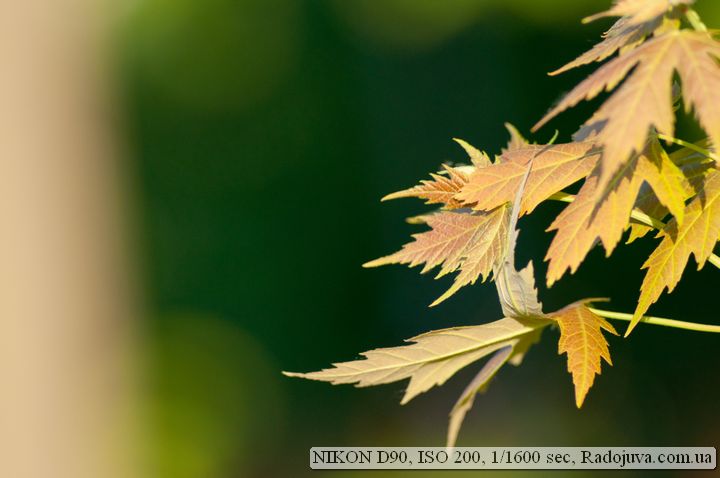
Sample photo on Nikon D90
The main parameters of Nikon D90, which are worth paying attention to
1. Live view
2. HD video 1280 * 720 24k \ s
3MP CMOS sensor
4. Aluminum-magnesium case with a bunch of buttons
5. Built-in autofocus drive
6. Additional screen
7. 4.5 frames \ second
8. Flash operating in Comand mode and FP mode
9. Lithium-ion battery
10. Matrix cleaning system
11. Bracketing exposure
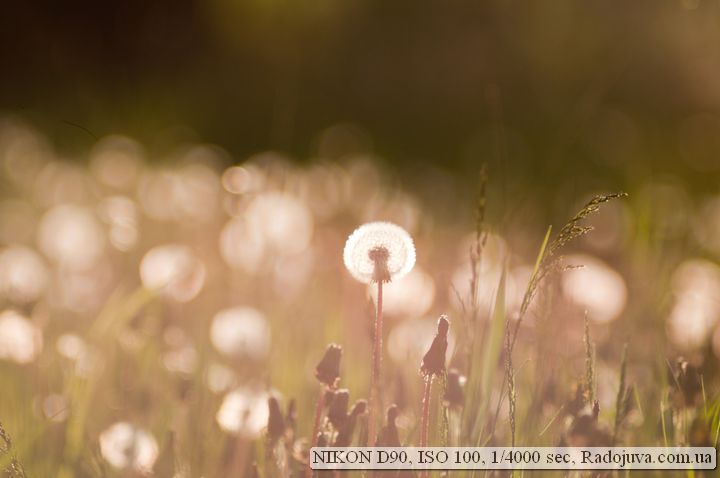
Example photo on Nikon D90
Now let's go through each item from a practical point of view.
1. Live View. Under live view it means “Live View” and in Nikon D90 it is quite a strong point.
First: made for the D90 very large screen (920.000 points - the same as in professional D3, D700) from which you can not tear yourself away. He even knows how to show slide shows to music!
Secondly: very convenient button to switch to live view - just clicked and the incomprehensible digital SLR turned into an ordinary soap box (useful for people who just switched to SLR cameras and just can't figure out what to see through the viewfinder).
Third: this mode allows clearly control focus at any point in your frame. Let’s take a closer look - when sighting you can select any area in the frame with the joystick and zoom it in on a scale of 1 to 1 - that is, select any point for focusing. This mode is indispensable when working with manual (non-autofocus lenses) and a tripod.
True, it takes time to get used to the work of the mirror, which adds unnecessary sounds and clinks when working. The mirror and shutter clicks when Live View is enabled, and when shooting, they click twice. It may seem that the camera is taking extra frames. A huge disadvantage of this mode is that autofocus works very, very slowly, and in video mode it does not work at all.
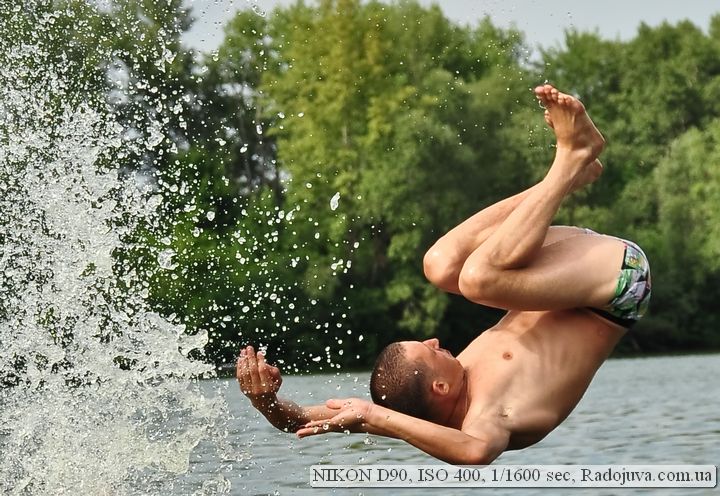
Photo on Nikon D90
2.HD video 1280 * 720 24k \ s without autofocus - absolutely unnecessary thing for a photographer
Why not necessary - because who will watch the video without autofocus? Okay, you can still take photos somehow in manual focus mode, but video with manual focus, when the scene changes at the speed of light, is a very difficult task. I recommend shooting video only with a tripod. A couple of times I shot a video with my hands - you can shoot, but again, it's very, very difficult. One more camera - Nikon D5000 - has video without autofocus.
The video itself is quite solid, in Motion JPEG format - which means that it “weighs” a lot. I advise you to immediately distill it into any of the popular formats after shooting - save a lot of disk space. Also, I advise you to block the exposure when shooting a video so that there are no tonal differences when changing the composition in the frame. Another serious problem with video is limiting the duration of the clip in 1280*720 up to 5 minutes. On the one hand, 5 minutes is quite enough to create short video selections, but I had to film my friend's performance once, and the 5 minute limit made the process very difficult. Also, after several 5-minute clips, the camera starts shooting clips up to 30 seconds long and turns off automatically, most likely due to the sensor overheating. The Nikon D90 is the first camera from Nikon with the ability to shoot video, so you shouldn't ask more of it. If you need a Nikon camera that shoots videos well and has automatic focus, then I advise you to look at the model Nikon D3100, Nikon D5100 и Nikon D7000.
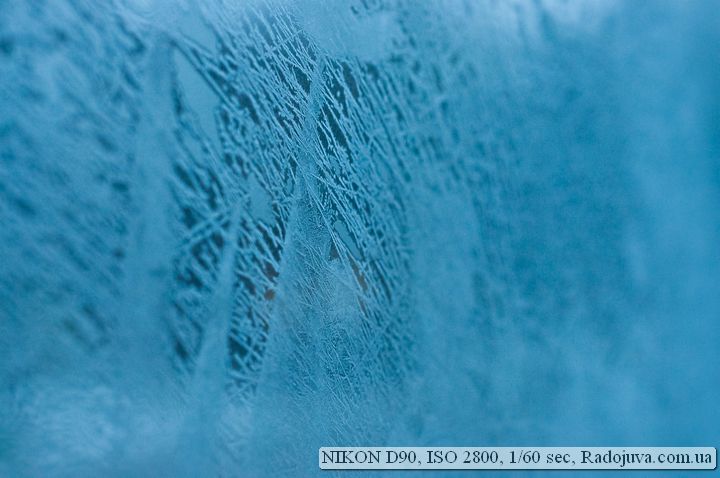
Photo on the Nikon D90. At high ISO.
3MP CMOS - just right
Why more? The more pixels - the higher the density and there may be more noise, due to the fact that the matrix cell is smaller and smaller - which means that it can catch less light. I advise you to read my article Battle of Megapixels.
The matrix is excellent. Of course, I already see noise at ISO 400, but at ISO 1600 they are still quite tolerant.
A very important point I noticed when working at high ISO, that the noise increases sharply after ISO 2500, that is, at ISO 2500 you can still squeeze something out, but then the quality of the photo drops dramatically. I recommend shooting at the proven ISO 200 and not raising ISO above 1600. ISO LO-1 (100) should be enabled only on a bright day, when you need to get some kind of portrait with an open aperture in order to keep within the shutter speed of 1 / 4000s. The values of ISO Hi1, Hi0.3, Hi0.7 are a kind of software wrapping of ISO, at such values it is practically impossible to get a low-noise picture.
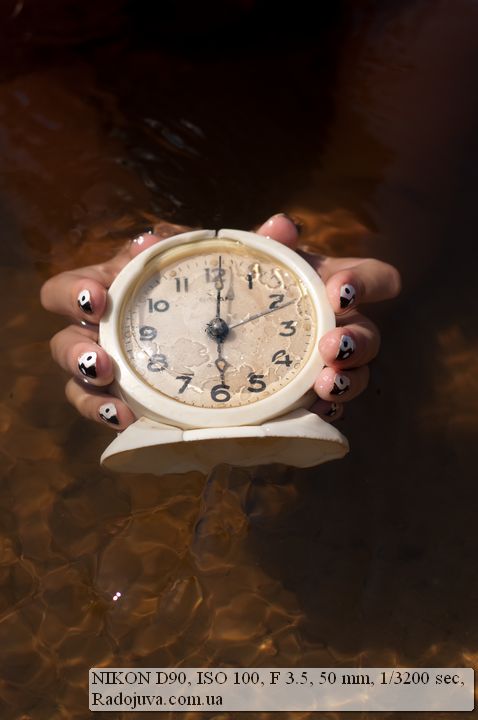
Sample photo on Nikon D90
4. Aluminum-magnesium housing (part)
In the introduction, I wrote that I constantly use, drag, ride with this camera and it feels quite adequately. Aluminum-magnesium alloy (although I did not find such information on the manufacturer’s website, but by weight, it’s not plastic) and one rubber insert, make the camera very practical, well-knocked down and provide excellent weight balance with different lenses. Perhaps for little hands it will be a little bit wrong, but for the serious hand of the photographer it’s just lovely.
On the body is a whole bunch of buttons. In the camera - the more the better. You can get quick access to all the basic functions and not scroll through the huge menu. I configured the programmable button to change the type of focus.
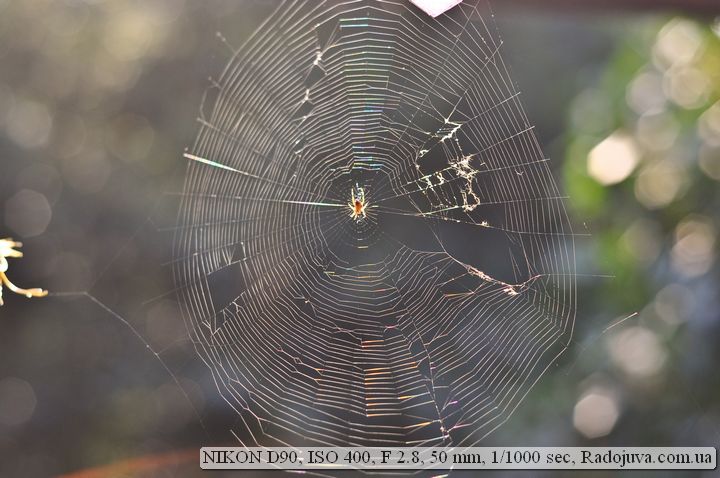
Wildlife Photo on Nikon D90
5. Built-in autofocus drive
A panacea for saving money and a panacea for professionals. The Nikon D90 camera has a built-in auto focus motor (screwdriver) for working with lenses marked AF. This allows you to use optics without a built-in focusing system (which means that you can use any autofocus lenses). Usually such optics are cheaper, for example, you can buy Nikon 50mm F1.8D AF for only $ 150 and feel like a real professional. Also, a huge portion of professional optics simply go without an auto focus motor. For example, there is simply no analogue for the Nikkor 135 DC with a built-in autofocus motor. More details about the compatibility of Nikon lenses in my article - Lens difference.
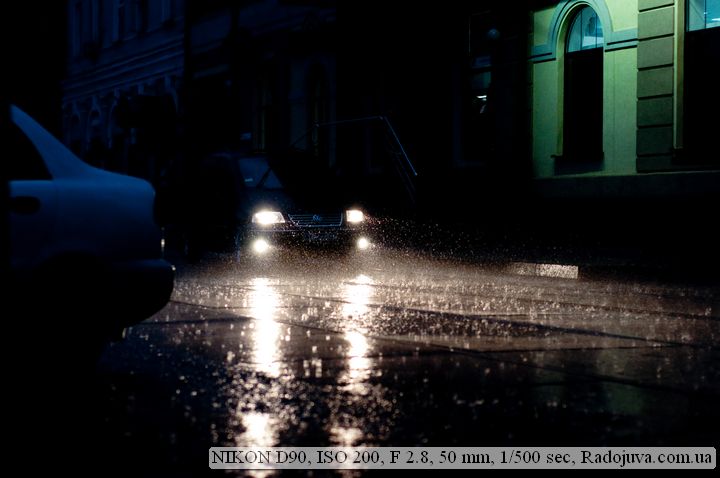
Photo on Nikon D90
6. Optional monochronous screen.
Recently I read on the Internet that the small monochrome display on the D90 is archaism, I was very surprised by this. In fact, it is not, the additional display is very good ergonomics and saves time, battery power, unnecessary movements. Let me explain - the display is always on top and you do not need to turn the camera upside down to look at the main display, secondly, it has a very high contrast in the sun (everything is visible), thirdly, it does not consume the battery (even the backlight mode of the additional screen uses a lot less charge than the main display). In general, the camera looks even more impressive with him. By the way - the backlight mode is turned on by turning the camera switch to the right. He himself then returns to its original position. Below is one of the most serious disadvantages associated with this lever.
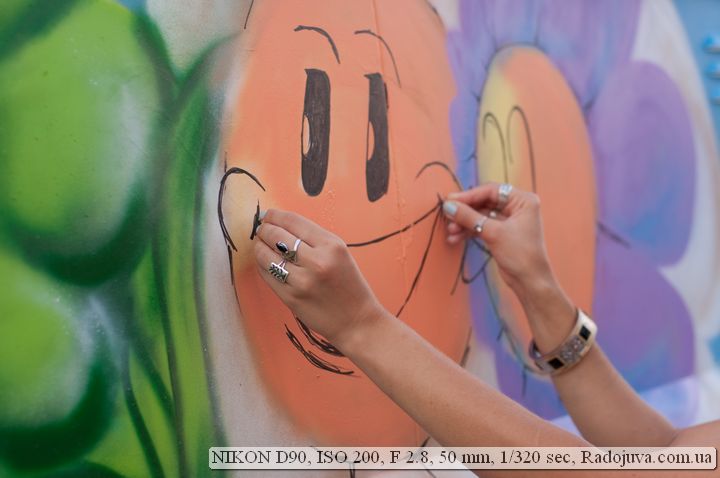
Photo on Nikon D90
7 - 4.5 frames / second
Someone can say, they say, stamps from Kenon are shot at 10 frames per second, the same D3 shoots 8 frames per second, but what can I say, D300 with a battery pack squeezes 8 frames per second. And now the question is - why do you need it? Burst shooting is very rare. 3 frames per second is already quite enough, the rest is only for specific tasks. Therefore, almost 5 frames per second is a pretty strong point. Conduct an experiment - at what speed can you press the camera button in the frame shooting mode? The same 5 times plus or minus will come out. In any case, the Nikon D90 has a higher rate of fire than the new, very expensive professional Nikon D800which can shoot at speeds up to 4 fps.
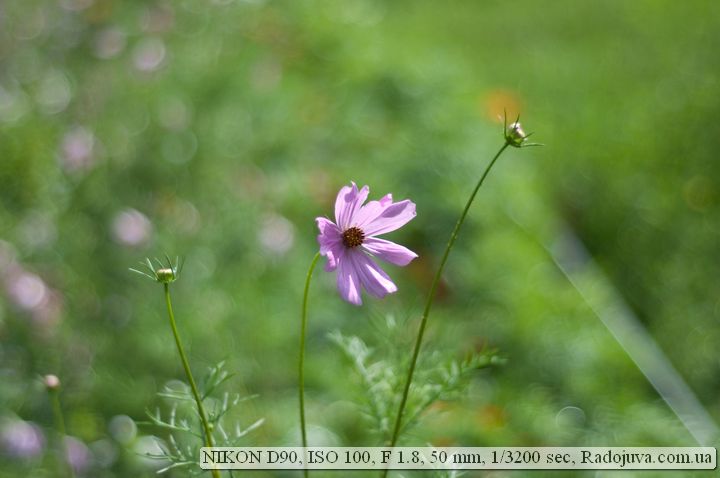
Sample photo on Nikon D90
8. Comand mode flash and FP support
Classics from Nikon. No need to buy expensive flash units or synchronizers - just go to the bracketing \ flash menu and select flash control mode C. Set the channel and group and control external flash units, such as SB-600, SB-700, SB-900, SB-800 и SB-910. Also do not forget that you can configure the built-in flash so that it gives only commands and does not take part in the shooting itself.
Then the most interesting - quick sync mode... With external flashes, you can set any shutter speed, up to 1/4000. Those who have not encountered such a problem will not understand; who knows, they will be glad. Few cameras support this mode. Why you need this, you can find, for example, in my article - 'flash in the afternoon '.
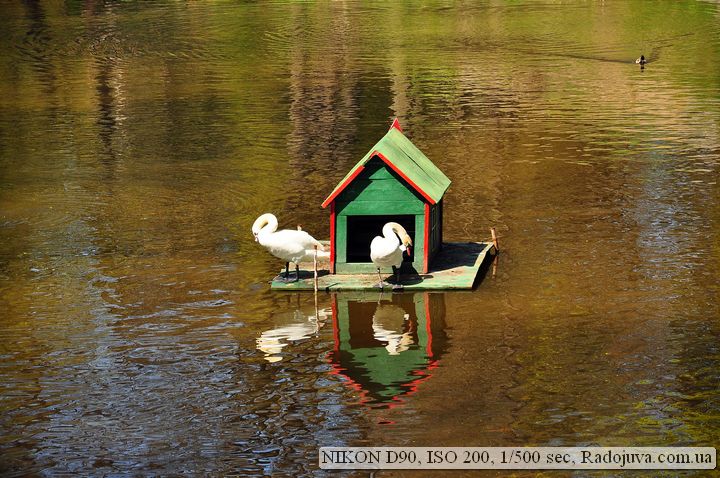
Sample photo on Nikon D90
9. Rechargeable Li-ion Battery EN-EL3e
Great armor-piercing battery. Also suitable for D700, D200, D300(s) etc. Withstands flash without over 2000 frames. The instructions say that it can provide work for 1200 shots, a third made with the flash - somewhere it is. The number of shots is greatly affected by the type of lens (e.g. VR mode), delay modes of the main display, etc.
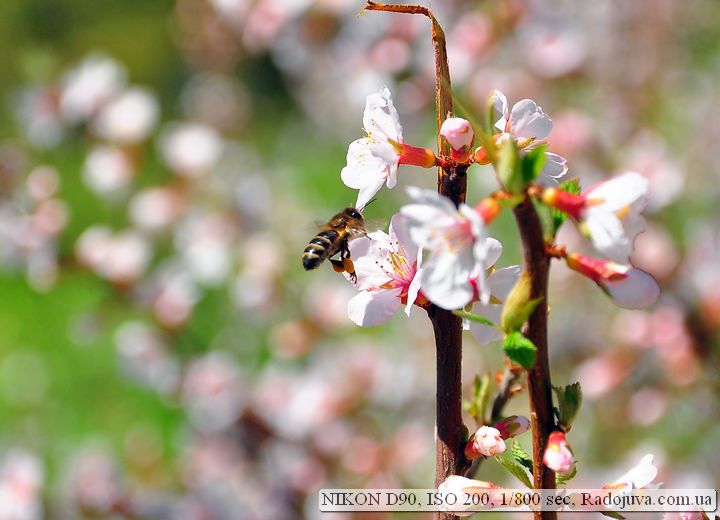
Sample photo on Nikon D90
10. Matrix cleaning system
A very useful thing. I recommend setting the cleaning when you turn off the camera, because when you turn it on, you often need to take pictures right away, and when you turn it off, let it clean for yourself. I advise you about cleaning the matrix read here.
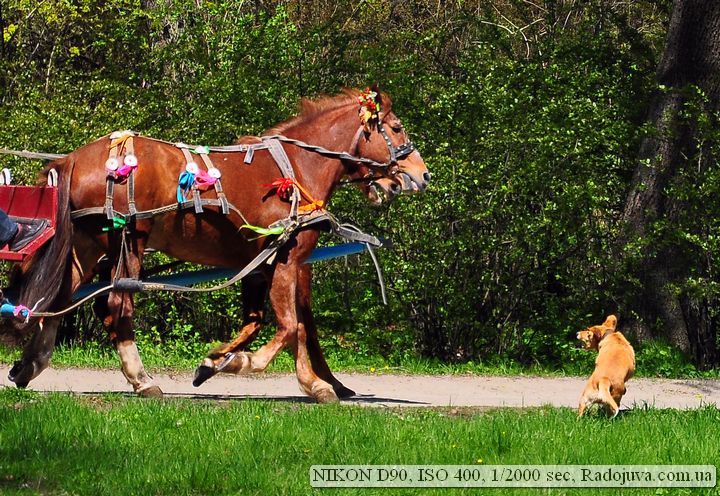
Sample photo on Nikon D90
11. Bracketing exposure
Bracketing allows you to shoot without fear for the correct exposure. True, this requires additional time, battery wear and fast filling of the memory card. It is under bracketing 4.5 frames per second are useful. I recommend not much use bracketing, it’s better to adjust the camera (especially the amendment exposure) and make one frame in RAW, and then, if anything, hold it out programmatically rather than slam the shutter on expo.
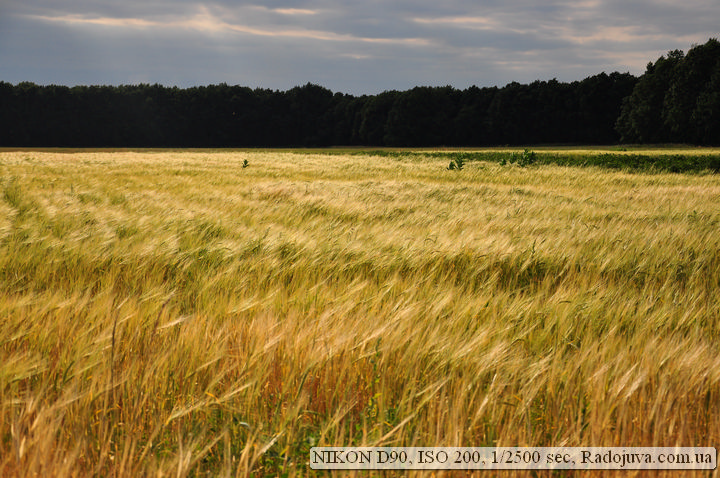
Nature photo on Nikon D90
I would like to note a number of huge advantages: wA wide range of functions to improve the picture - noise reduction functions, D-lighting etc.
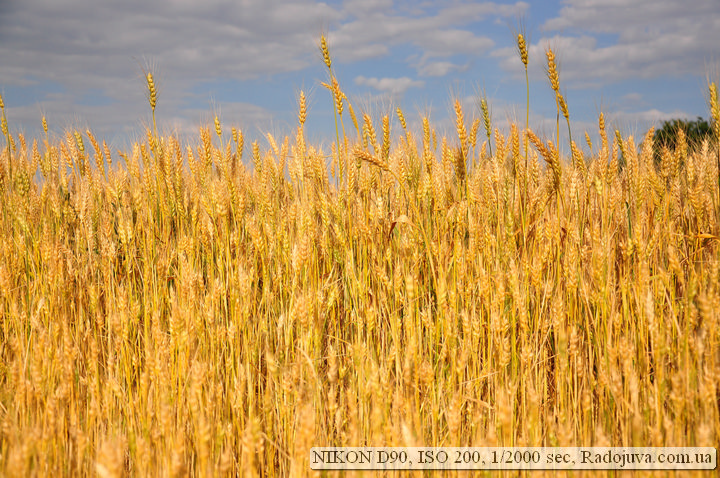
Nikon D90 photo
The disadvantages of the Nikon D90:
The strongest minus when working with the camera, I consider a strong return of the shutdown lever - that is, when you turn on the backlight of the additional screen, the lever moves back to the “ON” position, but its inertia is very strong and it goes further and turns off the camera (to the “OFF” position), therefore, you need to smoothly remove your finger after turning on the backlight of the additional screen. Very unpleasant stories are associated with this glitch, when at night, at important moments, the camera simply went out after setting the settings on the external display. Also, this switch is pretty loose, but it still works stably.
Also, after active work for a year, the rubber band, which is located to the right of the display, fell off, it expanded slightly and peeled off. I noticed that the rubber band covers the activity indicator of the memory card, that is, there is a fear of pushing the indicator deep into the camera and damaging it. The disease was treated by cutting off excess rubber and superglue. D90 got this disease from D200 and from D80. But, of course, I use my D90 camera a lot.
Exposure in 1/4000 second - if you haven’t understood yet, then when shooting with fast lenses starting with aperture of F / 1.8 and lower, you will miss the shutter speed, even at the lowest ISO.
Metering (exposure meter) does not work with non-chip lenses. It would be nothing, but this is just the camera and inferior to professional ones, such as D200 and older, almost any lens can be attached to them and the camera will operate in semi-automatic aperture priority mode or in good old manual mode. This really limits the operation of the camera with completely manual (without processor contacts) lenses, for example, Soviet ones - and you have to completely set all the settings “by eye”. Personally, I would very much like this function, since I am a fan of photographing with Soviet (and post-Soviet) optics.
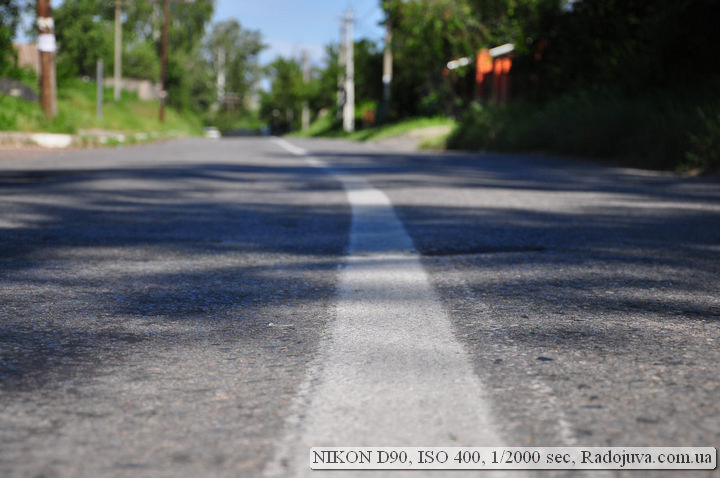
Photo on Nikon D90
For 3d tracking focus, there are not enough points (focus areas), and indeed, not enough focus points for such a solid camera.
No one wants depth of field view button imaged space. I use it very rarely, for example, in macro photography, but usually in 99% it is not needed. A funny thing that I advise you to check is to raise the flash and press the depth of field button (it’s located below, under the lens mount) and you will see that for a couple of seconds the flash works as a flashlight (using the strobe effect)
I consider one more unnecessary button \ property focus point lock button. It was useful to me only a couple of times, when I very strongly brought the camera to my face and accidentally pressed the joystick, thereby changing the focus point, in other cases, the point retains its position. It would be better instead of it to set the lever for changing the metering (as in older models), and so you have to press the top button near the external display and turn one of the selectors.
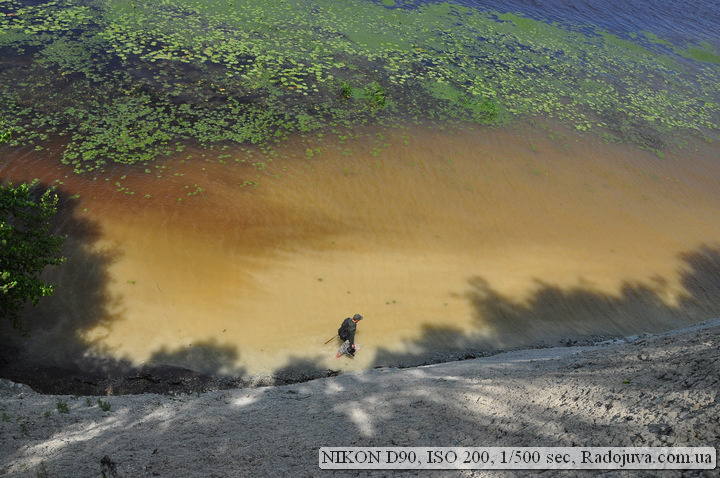
Photo at Nikon D90
Brief comparison with Nikon D80:
D90 is a descendant Nikon D80, which has an increased rate of fire, a different type of sensor (CMOS VS CCD), a central multi selector button is added, there is a Live View function and the ability to record video, and the display is also enlarged. Battery, menu navigation, ergonomics and other important functions remained the same. If you Nikon D80 I do not recommend upgrading the Nikon D90, as the main functions of the cameras are the same.
A brief comparison of Nikon 90 with D300, D300s:
D300, D300s Are professional cameras from Nikon, and the amateur D90 cannot compete with them. IN D300, D300s stronger body excerpt up to 1/8000, a professional camera control interface, high rate of fire and the ability to work with manual lenses, this is where the main differences end. I do not recommend overpaying for D300, D300s unless you have to shoot 1000 frames every day.
A brief comparison of Nikon 90 with D7000:
D7000 surpasses even the Nikon D300 in a number of parameters, D300s, and especially Nikon D90, because as an upgrade I recommend only Nikon D7000 or already ff Nikon D700, D600, D800.
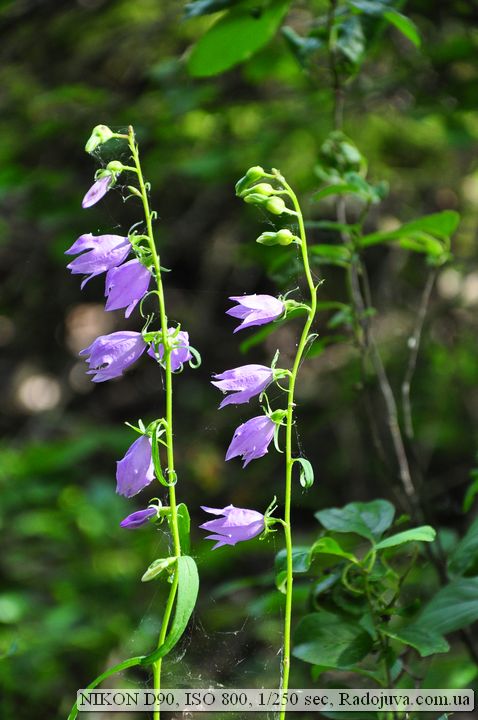
Photo at Nikon D90
Fit in the Nikon D90 Camera I think control with infrared remote Nikon ML-L3It costs a penny, and gives a lot of opportunities.
Attention: The final result of the image in the photograph depends very much on a large number of factors and the camera does not play the first role in this quantity, therefore, when photographing, remember - important how to take pictures, and don't try hard to find the best camera.
Sample Photos
The photos in the gallery below were shot on a budget lens Yongnuo 35mm f / 2 (model YN35mm F2N for Nikon cameras) and shown without treatment. Part of the photos is the conversion of the source RAW files by the original Nikon ViewNX-i utility without any additional adjustments, the other part is the original on-camera JPEG.
Download source files in format JPEG can at this link (114 files in the '.JPG' format, 735 MB).
More examples of photos, as well as source files, can be found in the reviews:
- YONGNUO LENS YN50mm F1.4N E
- Nikon DX AF-S Nikkor 18-55mm 1: 3.5-5.6GII ED SWM Aspherical
- Nikon N AF-S Nikkor 58mm 1: 1.4G Nano Crystal Coat SWM Aspherical
- YONGNUO 50mm 1: 1.8 (YN50mm F1.8N)
- Tokina VCM-S AT-X PRO SD 70-200 F4 (IF) FX N / AIS
- Nikon AF Nikkor 28mm 1: 2.8 (MKI)
- Tokina AT-X 80-400mm 1: 4.5-5.6 (AT-X 840 AF-II)
- Nikon AF Nikkor 20mm 1: 2.8D
- Tamron PZD Di 28-300mm F / 3.5-6.3 Piezo Drive VC Model A010
- Nikon Zoom-NIKKOR 80-200mm 1: 4.5 (AI, MKII)
- SIGMA ZOOM 28-105mm D 1: 2.8-4 DG
- Nikon AF Nikkor 28-70mm 1: 3.5-4.5 (MKI)
- Sigma 135-400mm 1: 4.5-5.6 D APO
- Tokina SD 24-70 F2.8 (IF) FX AT-X PRO Aspherical
- Nikon AF Micro Nikkor 105mm 1: 2.8 (MKI)
- Tamron 16-300mm F / 3.5-6.3 Di II PZD VC Model B016
- Tokina 107 Fisheye 10-17mm F3.5-4.5 DX AT-X Internal Focus
- INDUSTRAR 22U-1 1: 3,5 F = 50mm P
- LOMO RO501-1 F = 100 1: 2
- Nikon ED AF Nikkor 80-200mm 1: 2.8 (MKI)
- LOMO RO500-1 F = 90 1: 2
- Tokina AT-X PRO AF 28-70mm 1: 2.6-2.8 (Tokina AT-X 270 AF PRO)
- Nikon Lens Series E Zoom 75-150mm 1: 3.5 (MKII)
- Sigma DC 17-70mm 1: 2.8-4.5 MACRO HSM
- Tokina AT-X PRO SD 11-20 F2.8 (IF) DX ASPHERICAL
- SIGMA ZOOM 55-200mm 1: 4-5.6 DC HSM
- TAIR-3 4,5 / 300A
- Nikon DX AF-S Nikkor 55-200mm 1: 4-5.6GII ED VR II
- QUANTARAY TECH-10 NF AF MULTI-COATED 1: 4-5.6 f = 75-300mm
- Nikon NIKKOR-SC Auto 1: 1.2 f = 55mm
- Sigma DC 18-50mm 1: 2.8 EX MACRO HSM
- Tamron AF Aspherical 28-80mm 1: 3.5-5.6 177D
- Quantaray 70-300mm 1: 4-5.6 D LDO MACRO for Nikon AF, MACRO (200-300)
- SIGMA ZOOM 28-200mmD 1: 3.8-5.6 UC Aspherical
- Quantaray 70-300mm 1: 4-5.6 D LDO MACRO for Nikon AF
- MC PANCOLAR 1,8 / 50 CARL ZEISS JENA DDR
- YONGNUO 40mm 1: 2.8 (YN40mm F2.8N)
- Sigma 70-300mm D 1: 4-5.6 APO DG
- TOKINA AF 70-210 1: 4-5.6
- Sigma 70-300mm 1: 4-5.6 D DL MACRO SUPER
- Quantaray for Nikon AF 28-300mm 1: 3.5-6.3 LDO Multi-Coated (28-300mmD Ashperical IF)
- SIGMA ZOOM 28-300mm 1: 3.5-6.3 DG MACRO
- YONGNUO LENS YN 14mm F 2.8 N
- Tamron AF Tele-Macro 70-210mm 1: 4-5.6 158DN
- I-26m-U 2,8 / 52
- Sigma Zoom DC 18-200mm 1: 3.5-6.3 II HSM OS
- Yongnuo YN 85mm F1.8N
- INDUSTRAR 22U-1 1: 3,5 F = 50mm P
- SIGMA ZOOM 18-50mm 1: 2.8 EX DC (D)
- Nikon IX-NIKKOR 60-180mm 1: 4-5.6
- YONGNUO LENS 100mm 1: 2 (YN100mm F2N, for Nikon)
- PROMASTER DIGITAL XR EDO AF Aspherical LD (IF) 18-200mm 1: 3.5-6.3 Macro
- Tamron Di II SP 17-50mm F / 2.8 VC
- MC HELIOS-44M-4 58mm 1: 2
- YONGNUO 35mm 1: 2 (YN35mm F2N)
- Sigma DC 17-70mm 1: 2.8-4.5
- Nikon ED AF-S Nikkor 300mm 1: 4D IF Silent Wave Motor
- Yongnuo YN60mm F2NE MF MACRO
Prices for modern Nikon cameras in popular stores can look at this link.
Video review, retrospective
Comments on this post do not require registration. Anyone can leave a comment. Many different photographic equipment can be found on AliExpress.
Conclusions:
In general, the Nikon D90 camera is simply lovely, a wide range of functions will allow both professional and amateur to work. The speed of work and the quality of the picture are very pleasing.
Material prepared Arkady Shapoval. Training/Consultations | Youtube | Facebook | Instagram | Twitter | Telegram





































I stopped at this camera, I want to take a universal lens to it, what do you think if you take Tokina 50-135 mm f2.8 in pair with it, will I have enough angle and FR?
Wide angle will not be enough.
I have a D3100, I think to change either to D90 or D300. what do you advise?
D300 is a good shooter. Compared to the D90, it wins in everything except video and weight.
Hello Arkady. Advise, I am in thought. I have a D3100, at the moment I have sold it, I want to take a new D90 carcass because of the low price and good reviews. I’ve been photographing for a long time, I’m doing work with sites, partially reporting reporting. Will the D90 relieve my problems, the 3100 seems to have become braking, and it has become embarrassing to him. I don’t want to take the D7000 because of the overpriced price tag for CROP.
The D90 will be an excellent camera, if there is a need and the possibility of an upgrade, then the D90 will be a good option.
Thanks for the competent and objective review of Arcadia! He himself recently became the owner of this camera, having given his old friend D40 to his brother “by inheritance”. I would like to say that after the younger model, the great potential of the model with rich functionality is felt. In my opinion, the camera belongs to the amateur segment due to the relative noise of the matrix at high ISO, lower rate of fire, the inability to operate the exposure meter with ancient lenses, and the wheel with vario programs (sports, portrait, macro, etc.))) Video in the camera , in my opinion, is a completely unnecessary option, it only increases the cost of the device.
I don’t know about others, but for me 22 thousand, paid for a D90 carcass, is a lot of money. I do not understand at all those people who, having bought themselves a camera, begin to buy various lenses, flashes and other options, without really having any experience or serious knowledge, or, especially, professional aspirations. Why buy expensive equipment of several tens of thousands of rubles if you shoot with all this wealth a couple of times on vacation your friends or relatives lying on the beach with their belly up))? This is completely incomprehensible to me, perhaps some amateurs simply have an overabundance of finances)))
I am also grateful for Boris’s remark on working with non-native optics (Tamron 70-300). Honestly, I have not had such a problem yet (though I use the Sigma 10-20 wide-angle lens). Native lenses 18-70 and 55-200 work flawlessly.
Thank you for sharing your experience.
Good afternoon. The question is probably off topic .. I am interested in a custom button in the D90, more precisely, a way to configure it. Thanks in advance ..))
Press the INFO button, program the FN button. I use it as described in the article.
Thank you, I very rarely read blogs, I visit sites similar to yours ... But, thank you so much, I learned a lot of interesting and instructive ...)))
I’ve been using the Nikonitch D-90 for the second year (thanks to my beloved wife for the gift!) And don’t stop discovering new features of the device, with more subtle and deeper study, sometimes you are amazed at its capabilities! I tried Helios, Mir26V, Jupiter 36B with various Soviet lenses and did not receive satisfaction! TAIR-3 brought a lot of good shots and a pleasure to work! HUGE THANKS TO THE ORGANIZERS OF THIS SITE FOR THE PROVISION OF INFORMATION AND REVIEWS!
Not at all, though I'm only one organizer here)
Arkady, nevertheless THANKS!
Hello, please help
I have Nikon D 90, how can I take a picture so that the background is blurred, and the center of the photo is clear, let's say the face is clear and the background is blurred?
find your answer here https://radojuva.com.ua/2012/01/dof-best-lens-photo/
Arkady, please tell me. Should I upgrade from Nikon D5000 to Nikon:
- D90
-D300s
-D7000?
For finances, I will pull the D90 from 50 1.8, the rest is in question.
Reason for expected transition:
- a small home studio (I will use impulse flashes - in the amount of 3 pcs.)
- command mode control flash
- higher reliability.
Or stay with your D5000 and just buy a radio synchronizer, but as I understand it, there will be problems with exposure - you can't put it too short. Advise the best option for working in a mini-studio and working with light outdoors. I put out a huge gratitude in advance, since this question has been tormenting for several weeks already :-)
Studio flashes work mainly with shutter speeds up to 1/200. Personally, I accustom myself to 1/125 in order to shoot in any studio without any problems. Therefore, for a studio it is better to leave your 5000. If you plan to play with light outside the studio, then the D90 command mode and fast synchronization will be a useful feature. All the same, I recommend updating the camera to D90 / D7000.
Thank you for such a quick reply !!! If you leave your D5000, then which radio synchronizer would you recommend from inexpensive to implement my scheme?
Will synchronization in command mode between the D90 and studio flash pulses occur without problems? Those. No more related equipment will be needed between the D90 and the flashes?
I would very much like to read your article on the topic of studio equipment, what and how ...)))
There will be time, I’ll write about the studio.
As for the synchronizer, any inexpensive one will do. There will be no TTL synchronization between the D90 and the studio light, you can only set it up for ignition with a light trap.
I will really wait for the article)))
Thank you again for your promptness !!!
Have you come across Nikon D90 made by Taiwan? Will the build country not affect the quality of the camera?
Do you think you can take it?
I did not come across. But, as practice shows, the quality is not much different.
I am worried about the same question as terik107, does the country of assembly really not really affect the quality of the photo? Or is it still better to take the manufacturer Thailand?
Does not affect. All the same, matrices are made only in one place, and image quality is mainly affected only by mattress.
Thank you very much Arkady!
good time of the day !! I need advice, I want to buy myself a mirror ... here is the choice of either D5100 or D90 to pick up a used DXNUMX or DXNUMX from a friend, or how I can not decide ..
What is the purpose of the CPC? Are these cameras of different levels with very different functionality? If it's just instead of a soap dish - then D5100, if for the sake of something more - then D90.
To begin with, just for a high-quality photo, but with perspective growth. I do not plan to earn a photo, I consider it a hobby in my plans, especially for work I travel to the east of Ukraine and very often such landscapes open up ....
D90 will be more practical. A person is responsible for the quality of the photo.
D90 loses on the matrix?
yes one round of development
it turns out the choice or practicality with an outdated matrix and worse video or less convenience with a better matrix and decent video? I do not like when there is a choice))
These are cameras of different classes - amateur and advanced amateur. In D90 there are irreplaceable things, and in D5100 there is only a matrix. If it is difficult to choose - that is, D7000.
if I understand correctly, then I will be able to more or less use its capabilities not earlier than after a year of practice. will the D90 be still relevant by then? 7000 budget is not enough (((..
Speaking of the case, then at low ISO and similar settings it will be damn hard for you to distinguish one camera from another. How relevant the D90 will be in a couple of years depends on the dynamics of the market, and on the tasks for which you will use the D90. Personally, I still shoot on the obsolete D200 and do not feel any need to switch to the D7000.
if I understand you correctly if, with a calculation of development, is it better to stop at 90 rather than 5100?
Hold both cameras in your hands and understand everything yourself
if it feels like D90 is unambiguous !!! (the pens are not small :))
I am glad that you have decided.
Thank you very much for your help!!!
Arkady, another very important question for me. I took canon 600 as a test, in the store we did a test with a closed lens for 1/30, 1 and 2 seconds. Then they looked at the pictures on the laptop. That's almost a starry sky happened. In addition, the program alone for XP produced hundreds of hot pixels. Does this mean a marriage matrix? But at home I did it with my iPhone too, the picture is just perfect, everything turned out black. But the phone is in fact far from a DSLR. This makes me doubt the objectivity of such checks. Probably the large and sensitive matrices of DSLRs produce different artifacts. Because ordinary pictures seem to be without an obvious defect in my opinion. I'm going to take d90, how to check that? Thanks for the advice in advance.
No, this is such a matrix. Well, if there are really hundreds, then just a bad copy was caught. It is very difficult to notice these pixels at low ISO and multi-colored pictures (I am writing about hot pixels). Many cameras automatically extinguish them when creating a JPEG file.
Firstly, I want to express to the author and creator of the site a HUGE gratitude for his reviews, information and advice. I have never found such reviews that are easily understood and presented in an accessible language.
Secondly, I am faced with a dilemma… on the one hand, the proven and reliable D90, on the other, the newer D7000… + the difference in price.
I have experience in working and photographing cfs on the d3000, I want to improve my level in photographing. What is your opinion? I like the D90 + option for the difference in price, buy another Nikon 50 f / 1.8D AF Nikkor lens
Thank you :) The author and creator are one person)
A photographer buys a lens, and a camera for delivery, so you can safely take a D90 and a good lens :)
HOORAY! I bought it! I drool, happy to madness. Moreover, after a couple of days the anniversary, I made myself a worthy gift. D90 + 18-105 lens included. Wow, what an epic with its acquisition. In general, I’m waiting for the weekend, I’ll go to the historical reconstruction with the knights and there I am taking pleasure in it. )))
For those who choose. If you already had a DSLR, this is a step forward. Most of the funky will be understandable, you just need to get used to the features of this particular device.
For those who want to take a DSLR for show-off or that photos will be better than on a soap dish with one click of a button. Nooo ... at least d3100 is enough for a galza, it is better to take an ordinary non-mirror camera ala canon.
Those who take the first SLR think the media. But for more than a year, the d3100 was enough
Thank you for sharing your experience. They wrote everything correctly.
I have this camera in conjunction with optics with a built-in autofocus motor gives a soapy image, even at aperture of 3,5. Are there any features for setting up the camera with af-s lenses?
There are a lot of options for solving the problem with a soapy image. Most likely, just poor image quality, or long exposures when shooting.